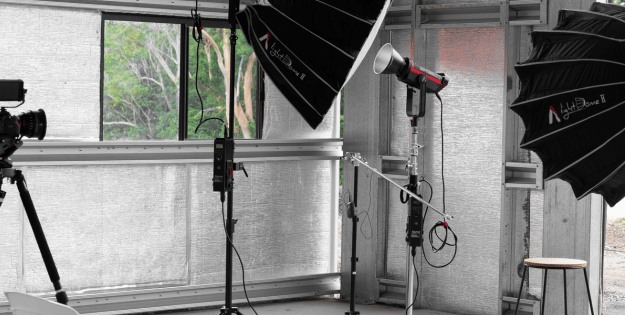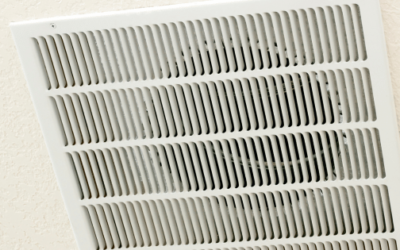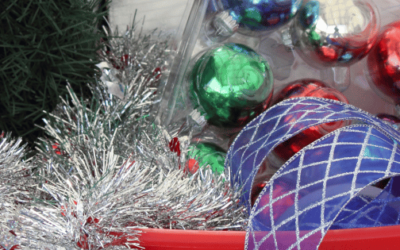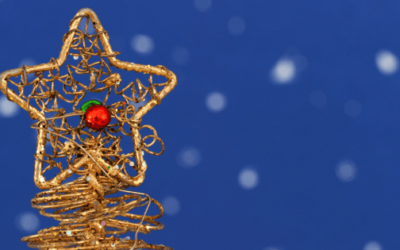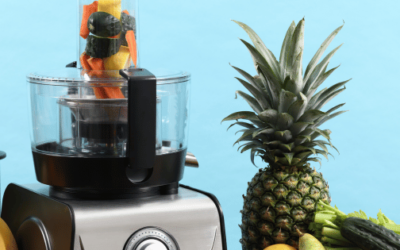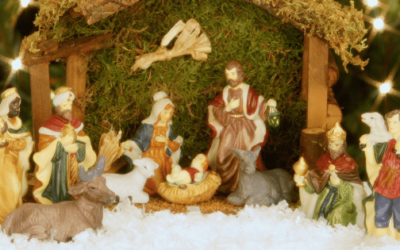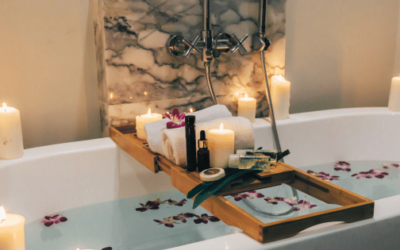In the world of theatre, lighting plays a pivotal role in setting the scene and enhancing the audience’s experience. Whether you’re a seasoned professional or just embarking on your theatrical journey, understanding the essentials of stage lighting equipment is crucial. From Fresnel spotlights to Par Cans, each tool has its unique function in bringing performances to life.
Fresnel spotlights, known as the workhorses of stage lighting, offer adjustable beams ideal for highlighting performers and props. Meanwhile, Par Cans provide a bright, even wash of light, perfect for general illumination and creating vibrant backdrops. Ellipsoidal spotlights, or Ellipspots, deliver precise, focused beams, allowing for dramatic effects and actor highlights.
Mastering these lighting tools not only enhances the visual appeal of a production but also ensures the audience’s attention is directed exactly where it’s needed. With the right equipment, any stage can be transformed into a captivating visual spectacle.
Top Amazon Sellers
Key Takeaways
- In theatre, lighting equipment such as Fresnel spotlights, Par Cans, and Ellipsoidal spotlights are essential for creating dynamic and engaging visual experiences.
- Studio lighting equipment, including continuous lights, strobe lights, and flashguns, serve different purposes, making them ideal for various photography and videography needs.
- Light modifiers like softboxes, umbrellas, and beauty dishes are crucial for shaping and directing light, offering photographers and filmmakers enhanced control over lighting quality and effects.
- Essential lighting functions such as key light, fill light, backlight, and hair light significantly impact visual storytelling by affecting depth and dimension in imagery.
- Reliable mounting and support gear, including light stands, C-Stands, and booms, play a vital role in stabilising and positioning lighting equipment effectively.
- Control systems and power sources, such as wireless triggers, sync cords, battery packs, and AC adapters, ensure seamless operation and consistent power supply for lighting setups.
- Accessories like gaffer tape, sandbags, and lighting bags are indispensable for securing, organising, and protecting lighting equipment, ensuring efficient and safe usage in any setting.
Types Of Light Sources
In studio setups, selecting the right light sources is crucial for effective lighting. Different types of studio lighting equipment offer unique advantages.
Continuous Lights
Continuous lights remain on, providing a constant source of illumination. They’re ideal for both stills and video, offering a clear view of lighting effects before shooting. These lights support easy white balance adjustments and often come in adjustable LED forms for precise scene control.
Strobe Lights
Strobe lights produce short, intense bursts of light, essential for freezing action and creating dynamic effects. They are commonly used in studio photography due to their powerful output and fast recycle times. Strobes typically require additional accessories and are not suited for video applications.
Flashguns/Speedlights
Flashguns, or speedlights, offer portability and versatility. They attach to cameras and provide additional light where needed, perfect for on-the-go shoots. Their compact size allows for quick setup, making them popular in both studio and outdoor environments.
Light Modifiers
Light modifiers are crucial components of any lighting equipment list. They help photographers and filmmakers manipulate light quality and direction to achieve desired effects.
Softboxes
Softboxes are versatile modifiers that diffuse light, creating a soft and even spread. With an enclosed design and a reflective interior, they produce minimal spill, enhancing control over light direction. Softboxes excel in portrait photography, where gentle, flattering illumination is essential for highlighting subjects.
Umbrellas
Umbrellas function as light reflectors, producing a broader spread. Available in silver or white, they are easy to set up and provide large, soft light sources. They are suitable for both studio and on-location shoots where quick adjustments are needed. Control is moderate, making them ideal for general lighting tasks.
Beauty Dishes
Beauty dishes provide focused, soft light, ideal for portrait and fashion photography. With a central reflector plate, they create contrast and detailed highlights. These dishes deliver a subtle transition between light and shadow, spotlighting facial features and textures without causing harsh shadows.
Reflectors
Reflectors are simple tools for redirecting light onto a subject. They come in various colours—silver for cool tones, gold for warmth, white for neutral fill, and black for shadow creation. Lightweight and portable, reflectors are invaluable in adjusting light quality and direction in diverse photographic setups.
Snoots
Snoots narrow the light beam for precise illumination of specific areas. By focusing light into a tight spot, they’re useful for highlighting a subject or creating dramatic shadows. Often used in studio portraiture, snoots offer exceptional versatility in shaping and directing light on complex shoots.
Lighting Functions
Lighting equipment serves distinct functions in enhancing visual storytelling. Positioning lights strategically creates depth and dimension, adding to the overall impact.
Key Light
The key light acts as the primary source, setting the scene’s overall tone. Positioned typically at a 45-degree angle, it provides the main illumination and shapes the subject’s features.
Fill Light
Fill light softens and reduces shadows, balancing the effects of the key light. Often placed opposite the key light, it ensures the scene appears more natural and less harsh.
Backlight
Backlight creates separation between the subject and the background, adding depth. Positioned behind the subject, it produces a rim light effect, enhancing the scene’s three-dimensionality.
Hair Light
Hair light highlights the hair’s texture, setting it apart from the background. It enhances the subject’s outline, contributing an extra layer of depth and adding drama to the composition.
Mounting And Support Gear
Mounting and support gear is fundamental for stabilising lighting equipment and ensuring optimal placement. Various tools in this category adapt to different requirements and contribute to effective lighting setups.
Light Stands
Light stands support different lighting fixtures, accommodating varying weights and heights. Their adjustable heights enable precise light positioning. Some models feature wheels for easy mobility, while others offer pin or screw mechanisms to secure equipment. Extensions and bar couplings further expand their versatility.
C-Stands
C-Stands, also known as Century Stands, provide reliable support with three adjustable legs for uneven terrain. Their extendable sections allow custom height adjustments. Equipped with a male end for accessories, C-Stands often include offset arms for additional flexibility in anchoring lights or modifiers effectively.
Booms
| # | Preview | Product | Price | |
|---|---|---|---|---|
| 1 |

|
soundcore Anker Boom 2 Bluetooth Speaker, Outdoor Speaker with 80W, Subwoofer,… |
£119.99
£79.99 |
Buy on Amazon |
| 2 |

|
Ultimate Ears MEGABOOM 3 Wireless Bluetooth Speaker (Powerful Sound + Thundering… |
£169.99
£139.97 |
Buy on Amazon |
| 3 |

|
Ultimate Ears, BOOM 3 Wireless Bluetooth Speaker, Bold Sound + Deep Bass,… |
£129.99
£60.95 |
Buy on Amazon |
| 4 |

|
Ultimate Ears BOOM 3 Wireless Bluetooth Speaker, Bold Sound + Deep Bass,… |
£129.99
£114.99 |
Buy on Amazon |
| 5 |

|
soundcore Anker Motion Boom Portable Bluetooth Speaker with Titanium Drivers,… |
£79.99
£59.99 |
Buy on Amazon |
Booms extend lighting equipment overhead, offering flexibility in angle and position. They ideal for situations where direct support from underneath isn’t feasible. With adjustable arms and counterweights, booms maintain balance and help achieve dynamic lighting effects in studio or stage environments.
Control Systems And Triggers
In the lighting equipment list, control systems and triggers play a crucial role in coordinating and optimising lighting setups. They enhance flexibility and ensure precise synchronisation between cameras and lights.
Wireless Triggers
Wireless triggers connect cameras and lighting wirelessly, using transmitters and receivers to sync them. They facilitate seamless communication over long distances and eliminate the need for physical cables, providing flexibility and ease of use.
Sync Cords
Sync cords offer a wired alternative for connecting cameras to lighting equipment. They ensure a reliable connection, ensuring precise timing for triggering lights. Though less flexible than wireless triggers, they provide a dependable option in controlled environments.
Power Sources
Lighting equipment relies on robust power sources to ensure continuous and effective illumination. Options for powering lighting equipment include battery packs and AC adapters, each suitable for different shooting scenarios.
Battery Packs
Battery packs provide portable power, making them essential for outdoor or location shoots. They’re compatible with various lighting equipment, ensuring flexibility and mobility. While offering convenience, users should monitor capacity levels to avoid disruptions during shooting sessions.
AC Adapters
AC adapters offer a stable power supply directly from wall outlets, perfect for prolonged indoor sessions. They’re essential for consistent lighting setups where uninterrupted power is critical. Users should verify compatibility and specific voltage requirements of their lighting equipment to prevent electrical issues.
Accessories And Other Essentials
Accessories play a vital role in safeguarding lighting equipment and enhancing setup efficiency. They ensure durability and stability, contributing to effective lighting arrangements.
Gaffer Tape
Gaffer tape is indispensable in any lighting equipment list. It secures cables and adjusts light modifiers without leaving residue. Its versatility extends to making quick fixes, making it an essential tool in unexpected situations. Keeping a roll accessible helps prevent potential disruptions.
Sandbags
Sandbags ensure stability for lighting setups by securing light stands. They prevent equipment from tipping over, safeguarding gear and people. Selecting appropriate weights for specific equipment is crucial for optimal stability. Sandbags thus contribute significantly to the safety of lighting arrangements.
Lighting Bags
Lighting bags are essential for organising and transporting lighting equipment. They protect items like continuous lights, strobes, and modifiers with padded compartments. Designed for secure storage, these bags ensure that delicate equipment is safe during transit, making them a vital component in equipment care.
Conclusion and Top Picks
A well-curated lighting equipment list is essential for anyone aiming to excel in theatre or photography. Each piece of equipment, from spotlights to modifiers and control systems, plays a crucial role in shaping the visual narrative. Mastery over these tools allows for creative expression and precise storytelling. Furthermore, understanding the importance of support gear, power sources, and accessories ensures a seamless and efficient setup. By investing in the right equipment and honing their skills, professionals can elevate their work, captivating audiences and creating memorable visual experiences.
Frequently Asked Questions
Why is lighting important in theatre and photography?
Lighting is crucial in theatre and photography as it enhances the visual impact and directs the audience’s attention. In theatre, it creates atmosphere and mood, while in photography, it improves the visual quality of images and highlights key elements.
What types of stage lighting equipment are commonly used?
The most common types of stage lighting equipment include Fresnel spotlights, Par Cans, and Ellipsoidal spotlights. Fresnel spotlights allow for adjustable beams, Par Cans provide broad illumination, and Ellipsoidal spotlights offer focused beams for dramatic effects.
What are the key benefits of using continuous lights in photography?
Continuous lights provide a steady source of illumination, which is ideal for both still photography and video. They allow photographers to see how the lighting will appear in real-time, making it easier to adjust for the perfect shot.
How do light modifiers like softboxes and umbrellas impact lighting?
Light modifiers such as softboxes and umbrellas manipulate the quality and direction of light. Softboxes diffuse light for a softer, even spread, ideal for portraits, while umbrellas reflect light for a broader reach and are easily set up.
What are the functions of different lighting roles like key and fill light?
Key light serves as the main source, setting the scene’s mood; fill light reduces shadows, balancing the key light. Backlight adds depth by separating the subject from the background, while hair light emphasises hair texture, adding drama.
Why is support gear crucial in lighting setups?
Support gear, such as light stands and C-Stands, stabilise lighting fixtures, ensuring optimal positioning and safety. Booms allow lighting equipment to be suspended overhead, facilitating dynamic effects in studio or stage environments.
How do control systems and triggers enhance lighting setups?
Control systems like wireless triggers and sync cords streamline lighting setups by allowing seamless coordination and timing between cameras and lights, especially over long distances, ensuring synchronisation and flexibility during shoots.
What power sources are commonly used for lighting equipment?
Lighting equipment typically uses battery packs for portable outdoor shoots, providing flexibility, and AC adapters for a stable power supply during prolonged indoor sessions, ensuring continuous operation without disruptions.
What role do accessories play in maintaining lighting setups?
Accessories such as gaffer tape, sandbags, and lighting bags are essential for securing cables, maintaining stability, and safely transporting equipment. These components facilitate efficient and durable lighting arrangements in theatre and photography.

